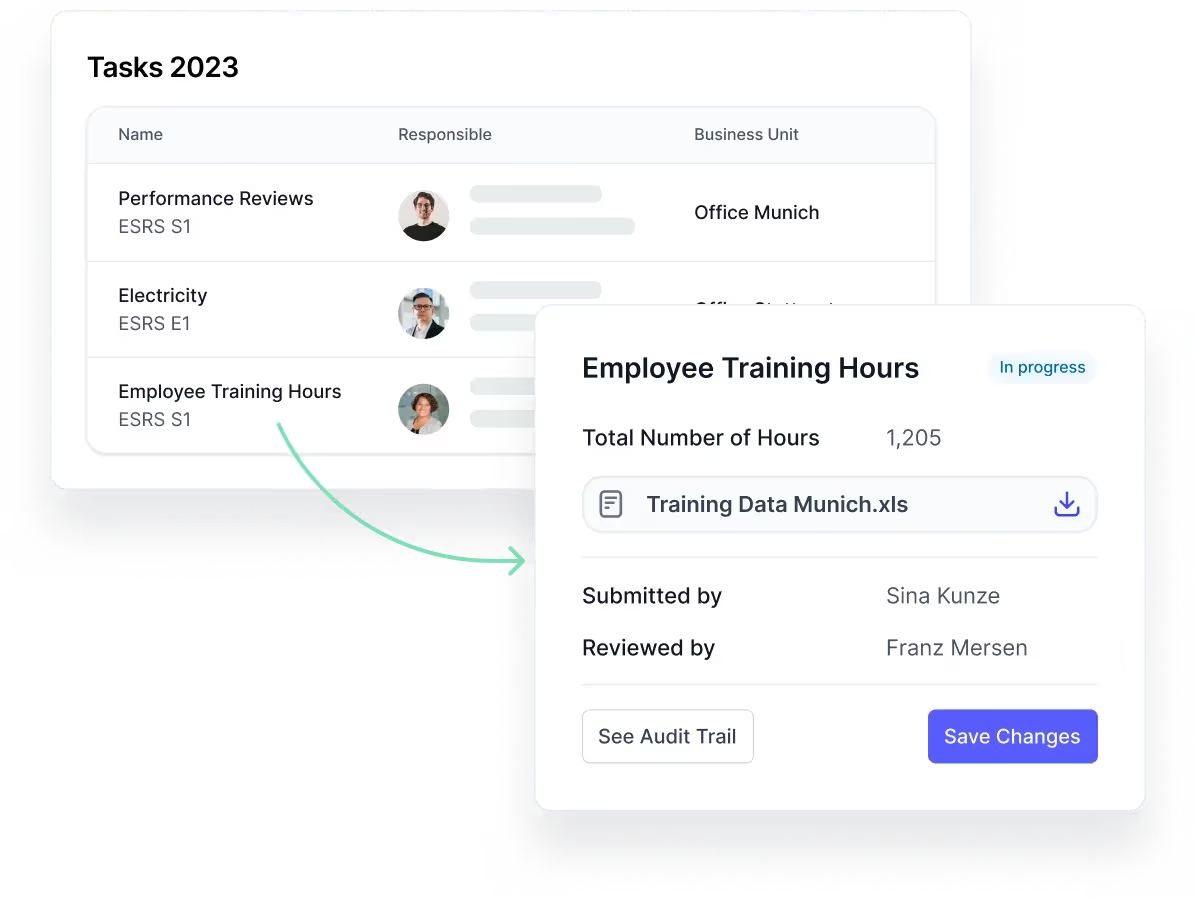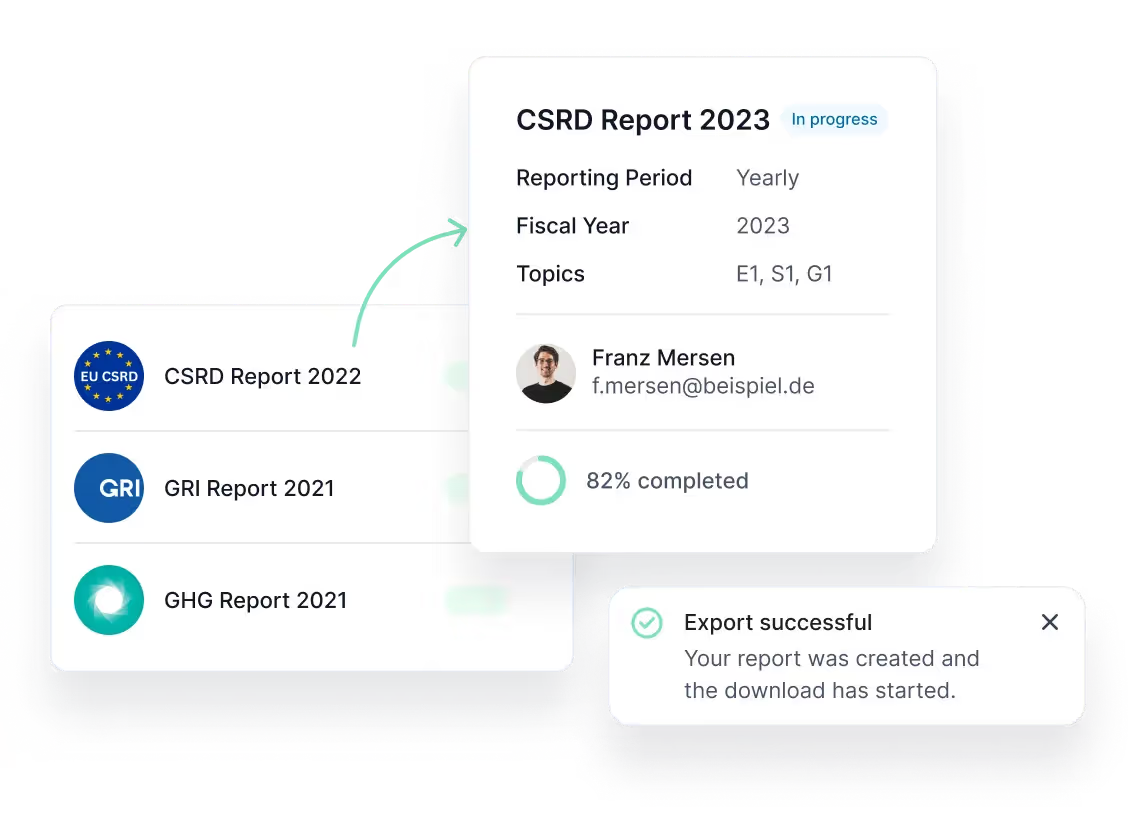Double materiality analysis in-app, AI-powered workflows, and optimized & auditable reporting processes. Ideally tailored for mid-sized industrial companies.




Meet regulatory requirements like CSRD, EU Taxonomy, and GRI with minimal effort.
Identify optimization potential in your ESG data and derive targeted measures to improve your sustainability performance.
Central integration of CCF, PCF, and CSRD data











































Implementation, regulatory details, and more. Find your answers here.
The number of data points to be recorded varies depending on the company and individual requirements. For medium-sized manufacturing companies, the scope is currently typically around 300 to 400 data points.
The CSRD makes the corporate carbon footprint (CCF) central by obliging companies to disclose their greenhouse gas emissions and document measures to reduce them in order to create transparency regarding climate risks and opportunities.
Internal stakeholders: Employees, executives, management and, if applicable, the Supervisory Board.
External stakeholders: Customers, suppliers, investors, NGOs, political and regulatory actors as well as the local community and environmental organizations.
In the context of the CSRD, the dual materiality assessment considers both the company's impact on the environment and society, as well as the financial risks and opportunities arising from sustainability issues. Material topics must be reported in detail with regard to their sustainability impact and financial relevance.
From 2024: Reporting obligation for companies under the NFRD.
From 2025: Non-capital-market-oriented EU companies that meet two of the criteria (250+ employees, €50M+ turnover, €25M+ balance sheet total).
From 2026: Capital market-oriented companies with two of the criteria (10+ employees, €0.9M+ turnover, €0.45M+ balance sheet total).
From 2028: Companies with €150M+ EU turnover and subsidiaries with €40M+ turnover.